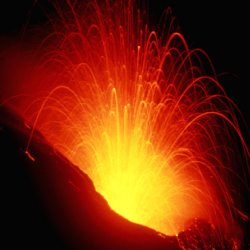The driving forces behind major shifts in recent human evolution and adaptation have been the subject of intense debate for more than 100 years. A group of researchers believe using records from the past can help understand how to meet the challenge of climate change today.
A five-year project named RESET (Response of Humans to Abrupt Environmental Transitions), funded by the Natural Environment Research Council, is bringing together scientists from Oxford, the Natural History Museum in London and the National Oceanography Centre at the University of Southampton with expertise in human palaeontology, archaeology, oceanography, volcanic geology and past climate change.
Ice-core records from Greenland have demonstrated beyond reasonable doubt that pronounced climatic shifts with severe environmental consequences occurred in historic periods of less than 20 years. This means that some of our ancestors experienced climatic changes every bit as rapid as those we face today.

Our understanding of how humans responded to those climate shifts events is limited because current studies are hampered by an inability to synchronize archaeological and geological records with the necessary precision.
"Being able to establish the precise temporal relationships between archaeological events and sudden changes in the environment has proved an elusive goal for scientists so far. Until this obstacle is overcome, answers to some of the most vital and intriguing questions about our recent past, and understanding fully their implications for the future, will remain tantalisingly beyond our grasp," commented Professor John Lowe, Professor of Geography and Quaternary Science at Royal Holloway and the scientific coordinator of RESET.
Dr. Simon Blockley, from Oxford University’s Research Laboratory for Archaeology and the History of Art, said: "Research like this is fundamental in understanding the role of climate change to the development and adaptation of our species."
The RESET project will construct a new chronological framework for testing the hypothesis that major shifts in human development coincided with abrupt environmental transitions in the recent geological past. At the core of this framework are volcanic ash layers (tephra layers) which are widespread throughout Europe, and which represent time-parallel signatures in archaeological and geological records.
According to Professor Chris Stringer, a specialist in human evolution at the Natural History Museum and a member of the RESET team, “This project could take us into a new phase in the interdisciplinary study of prehistoric human development. Establishing the precise order of events is the key to resolving some of the long-standing debates about climate history and its impacts on the human dimension, and long-standing research questions such as the fate of the Neanderthals.”
Source: Oxford






Comments